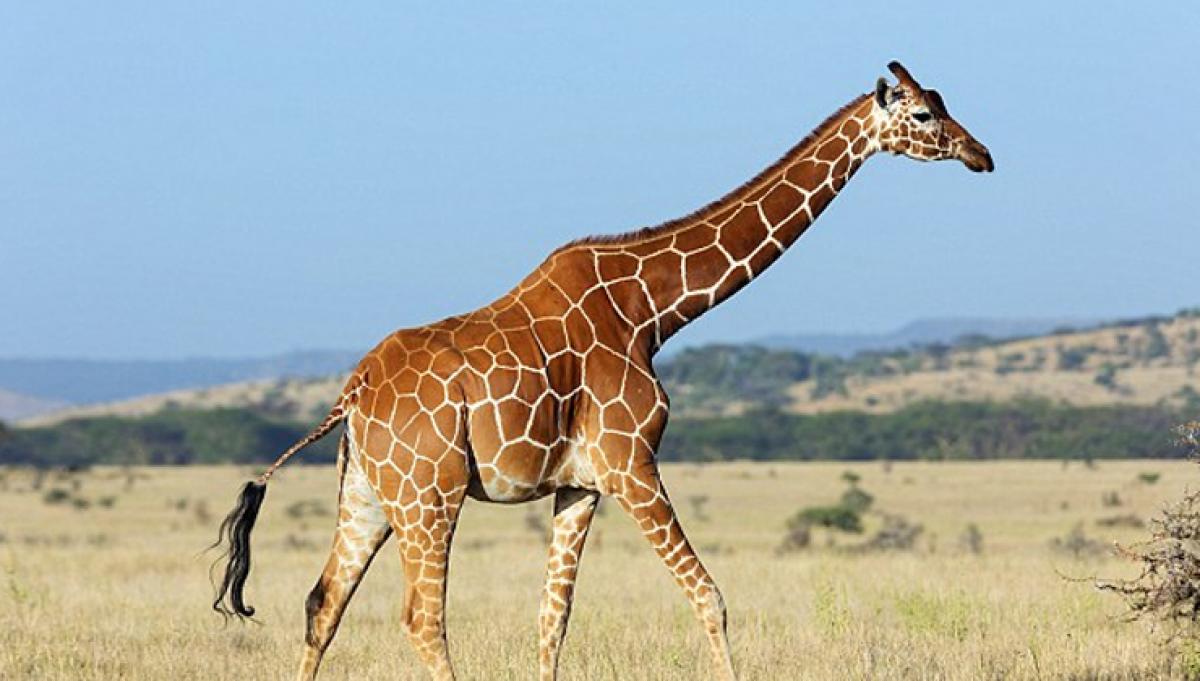Live
- Financial Intelligence Unit detects undisclosed income worth Rs 11,000 crore in 2024: Centre
- Odisha BJP chief to be elected in January
- AP Home Minister Anitha alerts officials amid rains in heavy Rains in Tirupati
- Taluk Guarantee panel
- Uber Launches Uber Moto Women for Safer and Flexible Rides in Bengaluru
- ‘Fear’ pre-release event creates waves
- Champions Trophy 2025 Host Change? Indian Broadcaster's Promo Sparks Controversy
- Nabha Natesh introduced as Sundara Valli from ‘Swayambhu’
- Aamir Khan praises Upendra's ‘UI: The Movie’ ahead of its release
- Celebrations: Keerthy Suresh ties the knot with Antony Thattil
Just In

x
Highlights
Researchers have discovered clues on how giraffe\'s neck evolved.Scientists have long theorized that the long neck of modern-day giraffes evolved to enable them to find more vegetation or to develop a specialized method of fighting.
Researchers have discovered clues on how giraffe's neck evolved.Scientists have long theorized that the long neck of modern-day giraffes evolved to enable them to find more vegetation or to develop a specialized method of fighting.

A new study of fossil cervical vertebrae reveals the evolution likely occurred in several stages as one of the animal's neck vertebrae stretched first toward the head and then toward the tail a few million years later.
The study's authors say the research shows, for the first time, the specifics of the evolutionary transformation in extinct species within the giraffe family.
It's interesting to note that that the lengthening was not consistent, said Nikos Solounias of NYIT College of Osteopathic Medicine. "First, only the front portion of the C3 vertebra lengthened in one group of species. The second stage was the elongation of the back portion of the C3 neck vertebra. The modern giraffe is the only species that underwent both stages, which is why it has a remarkably long neck."
Solounias and Melinda Danowitz, a medical student in the school's Academic Medicine Scholars program, studied 71 fossils of nine extinct and two living species in the giraffe family. The bones, discovered in the late 1800s and early 1900s, were housed at museums around the world, including those in England, Austria, Germany, Sweden, Kenya, and Greece.
Researchers also found that the most primitive giraffe already started off with a slightly elongated neck, said Danowitz, adding that the lengthening started before the giraffe family was even created 16 million years ago.
But the main discovery came after the researchers analyzed anatomical features of the various fossils and compared them to the evolutionary tree.
Solounias and Danowitz found the cranial end of the vertebra stretched initially around 7 million years ago in the species known as Samotherium, an extinct relative of today's modern giraffe. That was followed by a second stage of elongation on the back or caudal portion around one million years ago. The C3 vertebra of today's giraffe is nine times longer than its width-about as long as an adult human's humerus bone, which stretches from the shoulder to the elbow.
As the modern day giraffe's neck was getting longer, the neck of another member of the giraffe family was shortening. The okapi, found in central Africa, is the only other living member of the giraffe family. Yet, rather than evolving a long neck, Danowitz said this species is one of four with a "secondarily shortened neck," placing it on a different evolutionary pathway.
The study is published in Royal Society Open Science.

Next Story
More Stories
ADVERTISEMENT
© 2024 Hyderabad Media House Limited/The Hans India. All rights reserved. Powered by hocalwire.com







